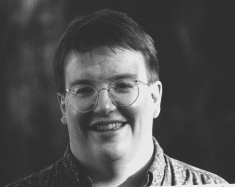Conspiratorial thought in the Early American Republic
Non-comprehensive bibliography on conspiratorial thought in the Early Republic
I am posting this more for my historian colleagues online than for the class, but some of you guys may find this useful too. Colleagues feel free to post additional citations in the comment section.
I am posting this more for my historian colleagues online than for the class, but some of you guys may find this useful too. Colleagues feel free to post additional citations in the comment section.
- Bailyn, Bernard. The Ideological Origins of the American Revolution. Cambridge, Mass.: Harvard University Press, 1967.
- Billington, Ray Allen. The Protestant Crusade, 1800-1860: A Study of the Origins of American Nativism. Chicago: Quadrangle Books, 1964.
- Briceland, Alan V. "The Philadelphia Aurora, The New England Illuminati, and The Election of 1800." Pennsylvania Magazine of History and Biography 50 (January 1976): 3-36.
- Carter II, Edward C. "A "Wild Irishman" Under Every Federalist's Bed: Naturalization in Philadelphia, 1789-1906." Pennsylvania Magazine of History and Biography 94 (1970): 331-46.
- Davis, David Brion, ed. The Fear of Conspiracy: Images of Un-American Subversion From the Revolution to the Present. Ithaca: Cornell University Press, 1971.
- ________. The Slave Power Conspiracy and the Paranoid Style.The Walter Lynwood Fleming Lectures in Southern History. Baton Rouge: Louisiana State University Press, 1969.
- ________. "Some Themes of Counter-Subversion: An Analysis of Anti-Masonic, Anti-Catholic, and Anti-Mormon Literature." Mississippi Valley Historical Review 47, no. 2 (September 1960): 205-24.
- Formisano, Ronald P. and Kathleen Smith Kutolowski. "Antimasonry and Masonry: The Genesis of Protest, 1826-1827." American Quarterly 29 (1977): 139-65.
- Goodman, Paul. Towards a Christian Republic: Antimasonry and the Great Transition in New England. New York: Oxford University Press, 1988.
- Howe Jr., John R. "Republican Thought and the Political Violence of the 1790's." American Quarterly 19 (1967): 147-65.
- Hünemörder, Markus. "The Society of the Cincinnati: Conspiracy Theory in the Early American Republic." Bulletin of the German Historical Institute, no. 31 (Fall 2002): 65-80.
- Knight, Peter, ed. Conspiracy Theories in American History: An Encyclopedia. 2 vols. Santa Barbara, Calif.: ABC-CLIO, 2003.
- Kutolowski, Kathleen Smith. "Antimasonry Reexamined: Social Bases of a Grass-Roots Party." Journal of American History 71 (September 1984): 269-93.
- ________. "Freemasonry and Community in the Early Republic: The Case for Antimasonic Anxieties." American Quarterly 34 (1982 ): 543-61.
- Murrin, John M. "Escaping Perfidious Albion: Federalism, Fear of Aristocracy, and the Democratization of Corruption in Postrevolutionary America." In Virtue, Corruption, and Self-Interest: Political Values in the Eighteenth Century, ed. Richard K. Matthews. Bethlehem, Pa.: Lehigh University Press, 1994.
- Nash, Gary B. "The American Clergy and the French Revolution." William and Mary Quarterly 3d ser., 22 (1965): 392-412.
- Newman, Simon. "The World Turned Upside Down: Revolutionary Politics, Fries' and Gabriel's Rebellions, and the Fears of the Federalists." Pennsylvania History 67, no. 1 (2000): 5-20 .
- Pasley, Jeffrey L. "Conspiracy Theory and American Exceptionalism from the Revolution to Roswell." Unpublished conference paper, May 2000. Available at http://conspiracy.pasleybrothers.com/CT_and_American_Exceptionalism_web_version.htm.
- Ratner, Lorman. Antimasonry: The Crusade and the Party. American Historical Sources Series: Research and Interpretation. Englewood Cliffs, N.J.: Prentice-Hall, 1969.
- Ridgway, Whitman H. "Fries in the Federalist Imagination: A Crisis of Republican Society." Pennsylvania History 67, no. 1 (2000): 141-60.
- Rohrs, Richard C. "Partisan Politics and the Attempted Assassination of Andrew Jackson ." Journal of the Early Republic 1 (Summer 1981): 149-63.
- Schultz, Nancy Lusignan, ed. Fear Itself: Enemies Real and Imagined in American Culture. West Lafayette, Ind.: Purdue University Press, 1999.
- Smelser, Marshall. "The Federalist Period As an Age of Passion." American Quarterly 10 (Winter 1958): 391-419.
- Stauffer, Vernon. New England and the Bavarian Illuminati. New York: Russell & Russell, [1967].
- White, Ed. "The Value of Conspiracy Theory." American Literary History 14 (Spring 2002): 1-31.
- Wood, Gordon S. "Conspiracy and the Paranoid Style: Causality and Deceit in the Eighteenth Century." William and Mary Quarterly 3d ser., 39, no. 3 (July 1982): 401-41.
- Brooke, John L. "Ancient Lodges and Self-Created Societies: Voluntary Association and the Public Sphere in the Early Republic."In Launching the 'Extended Republic': The Federalist Era, eds. Ronald Hoffman and Peter J. Albert, 273-377. Charlottesville: University of Virginia Press, 1996.
- Bullock, Steven C. Revolutionary Brotherhood: Freemasonry and the Transformation of the American Social Order, 1730-1840. Chapel Hill: University of North Carolina Press for the Omohundro Institute of Early American History and Culture, 1996.
- Lipson, Dorothy Ann. Freemasonry in Federalist Connecticut, 1789-1835. Princeton: Princeton University Press, 1977.


<< Home